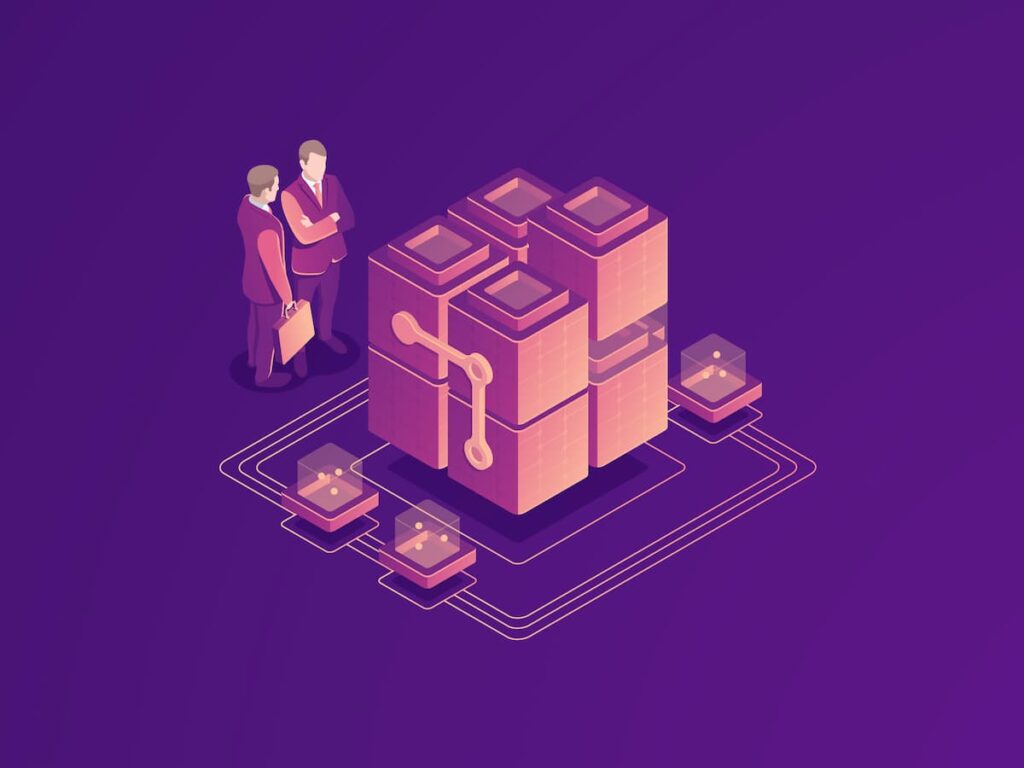Table of Contents
Let’s get straight to the point: selecting a tech stack for your Web3 project is an important decision that has far-reaching implications. It’s not merely about choosing a few tools and programming languages; it’s a choice that impacts your entire project.
The technology you choose directly affects the type of professionals you’ll need to hire. Selecting an advanced web3 stack might make it harder and longer to find skilled developers, and choosing a less common option could become outdated if the technology falls behind.
Moreover, the Web3 domain develops and changes rapidly. Technologies that are popular today may become outdated tomorrow. So, you have to think long-term: Is the chosen technology compatible with future developments in blockchain and smart contracts? Does it have the flexibility to scale with your project, or will it limit your growth?
Let’s explore the most optimal way to choose the Web3 stack that suits best your project.
Did you know?
- The high-security level of blockchain technology has driven the adoption of Web3 across various industries, with approximately half of all financial applications adopting Web3 technology.
- In 2023, Amazon ramped up its recruitment efforts to expand its Web3 development team and assist in launching an NFT marketplace.
- The Web3 market has witnessed significant growth, with its valuation standing at $2.86 billion in 2023.
- The global Web3 market is projected to reach $49.1 billion by 2030, reflecting the increasing interest in and adoption of decentralized technologies.
- As of 2024, major corporations, including Starbucks, Salesforce, Nike, and JP Morgan, have been actively implementing Web3 technologies.
Establishing your project's core technical criteria: Web3 stack
Before exploring numerous technology options available, establish your criteria. Identify what you are seeking in the technology you select.
Just like creating a grocery list before shopping, define your requirements to sharpen your focus and guide your decision-making process.
This step is about setting the ground rules upfront to ensure that every choice is strategic and informed. When selecting a tech stack, consider these key factors:
Developer adoption
Focus not only on the technology itself but also on the developers who will use it. How widespread is the expertise in this technology? Will your team require a lot of training, or are they equipped to start immediately?
Scalability
Anticipate the growth of your project. Does the technology have the capacity to scale up to meet increasing demands, not only in terms of user numbers but also for more complex transactions or data management?
Integration capabilities
Assess how well the tech stack can cooperate with other systems. Is it compatible with the other tools, services, or platforms you intend to use?
Cost-efficiency
Think about the financial impact. Some technologies may be cheaper initially but impose greater costs over time due to scaling challenges or maintenance requirements.
User adoption
Determine how user-friendly the technology is for your target audience, especially given the varied levels of expertise in the Web3 community.
Compliance and security
Given the changing regulatory environment for blockchain technology, how well does your chosen web3 tech stack comply with existing laws and potential future regulations?
Smart contracts: Why do you need them?
Smart contracts are automated codes that execute the terms of an agreement directly between two parties, eliminating the need for intermediaries.
Once set up, smart contracts are secure and tamper-proof. They are transparent, with both parties able to access the available terms at any time.
Smart contracts are important to the functionality of many Web3 projects, and the choice of platform can greatly influence both capabilities and performance.
Read more about NFT marketplace solutions
Choosing the platform
Perform a SWOT analysis for each potential platform you consider. This analysis should focus on how each platform aligns with your project’s specific requirements and the overall market conditions. Here’s how to approach it.

Here’s a breakdown of some notable blockchain platforms and their key characteristics, which could guide you in choosing the right web3 tech stack for your project.
Solana
Known for its exceptional transaction speed and cost-effectiveness, Solana stands out as a great option for projects that require high throughput.
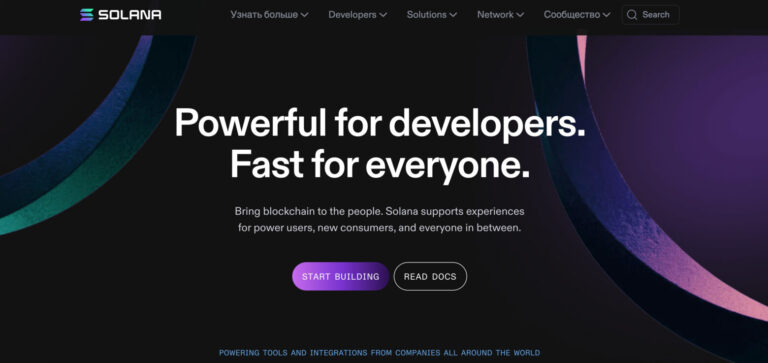
Polkadot
Its interoperability allows different blockchains to communicate easily. This makes Polkadot well-suited for projects that operate across multiple chains.
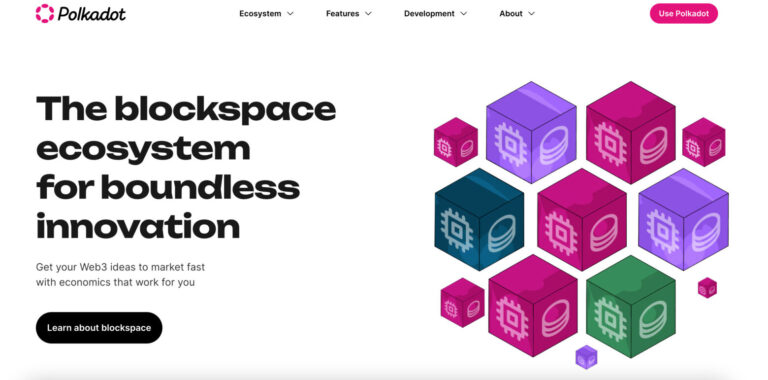
Avalanche
Notable for its quick transactions and compatibility with Ethereum’s development tools, Avalanche is attractive to developers seeking scalable solutions in a familiar framework.
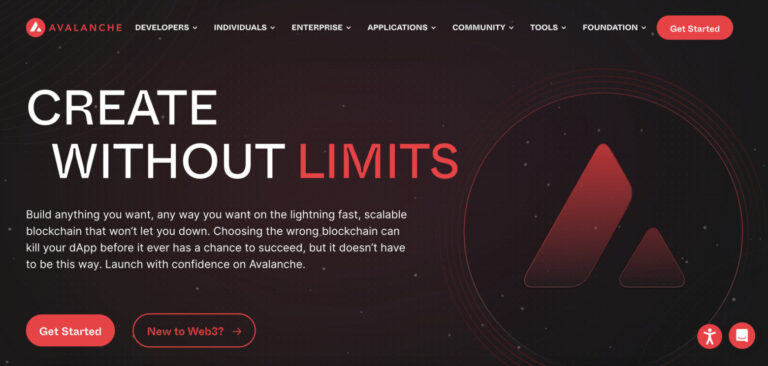
Binance Smart Chain (BSC)
BSC is celebrated for its swift and affordable transaction capabilities and a rapidly growing decentralised application (dApp) ecosystem. It is particularly appealing to projects focused on accessibility and expanding their user base.
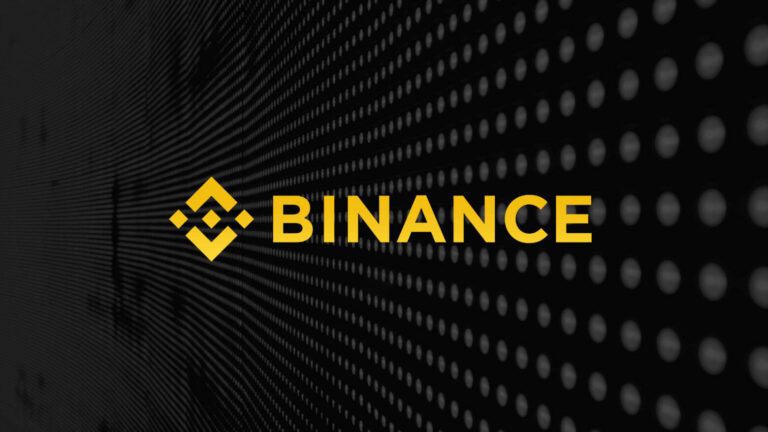
Hyperledger Fabric
Perfect for private or consortium blockchain initiatives, Hyperledger Fabric provides a modular and adaptable architecture. It supports a broad spectrum of industry applications due to its permissioned nature, which ensures enhanced security and greater control over transactions.
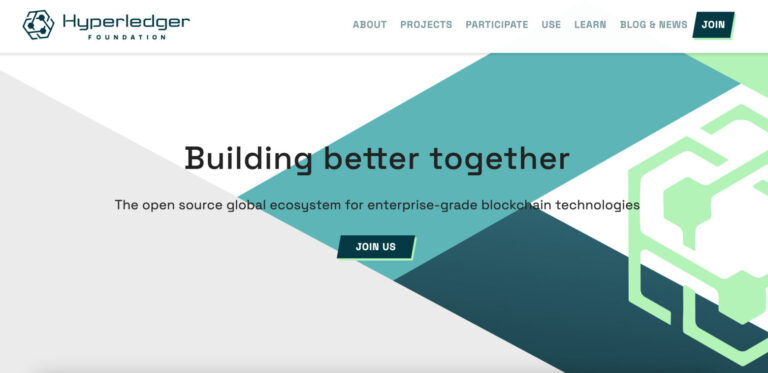
The pillars of frontend and backend development
JavaScript continues to be a driving force in the Web3 domain, largely due to its excellent compatibility with blockchain technologies and the support it receives from the developer community.
For frontend development, React.js is often the top choice, praised for its component-based architecture and comprehensive library ecosystem. These features make it exceptionally suitable for designing interactive decentralised applications (dApps).
Although Angular.js provides a well-organised framework, React.js is generally favored for its flexibility in building dynamic full stack Web3 applications.
On the backend, Node.js creates an effective bridge connecting server-side operations to the blockchain. Within this environment, some frameworks are most preferred.
Nest.js
Using TypeScript, Nest.js has a modular structure perfect for developing large-scale, enterprise-level applications.
Express.js
Known for its simplicity and speed, Express.js is excellent for quickly developing APIs and server-side applications, streamlining the process of building robust server logic.
Plan your data strategy
To set up an effective data strategy for your decentralised application (dApp), follow these detailed steps:
- List your data needs: Begin by enumerating all different kinds of data your dApp will manage. This includes everything from user information and transaction logs to preferences and session data.
- Categorise: Label each type of data as ‘On-Chain’ or ‘Off-Chain’. For data designated as ‘Off-Chain’, further categorise it under ‘SQL’ or ‘NoSQL’ based on its characteristics and relationships.
- Evaluate: For ‘On-Chain’ data, assess whether the benefits of blockchain’s transparency and security are worth the associated costs. For ‘Off-Chain’ data, determine the optimal way to organise and access it. Consider how the data is interrelated and how flexible the data structure needs to be.
- Sketch a data map: Create a visual map or flowchart to illustrate where each type of data will be stored and how these elements are interconnected. This diagram should help visualise the flow of data across your dApp’s ecosystem, highlighting how on-chain and off-chain data storage can be optimally utilised.
This structured approach helps ensure that your data strategy plan is comprehensive, cost-efficient, and scalable, effectively combining the strengths of blockchain technology with traditional data management systems.
Explore what’s possible with proper data quality.
Building a reliable DevOps ecosystem
Establishing a strong DevOps framework is essential for the smooth functioning and ongoing enhancement of your Web3 project. This setup includes integrating CI/CD pipelines, conducting complex testing, and selecting suitable hosting and infrastructure solutions.
Learn why you may need a DevOps engineer on your team!
CI/CD Pipelines
CI/CD (Continuous Integration/Continuous Deployment) pipelines are an important part of automating your development process. They help manage the lifecycle of your code from initial integration and testing to final deployment.
Using tools like GitHub Actions or Jenkins can streamline these processes. These tools automate the integration of new code changes by building and testing every update before it is deployed.
This automation not only minimises human errors but also accelerates the development cycles, enabling a more agile and responsive development environment.
Testing
Implementing complex testing strategies is inevitable for identifying and fixing bugs early in the full stack web3 development process, which helps maintain the integrity and robustness of your Web3 project.
Use testing frameworks like Jest or Mocha to conduct unit and integration tests on your backend code. These tools are well-suited for Node.js environments and allow for a thorough examination of your application logic under various scenarios.
For smart contracts, particularly those on platforms like Ethereum, tools such as Truffle or Hardhat are invaluable. These tools provide a development environment that includes features for compiling, deploying, and testing contracts using Ethereum virtual machines.
Best server hosting and infrastructure solutions: picking the right platform
Selecting a dependable and scalable hosting solution is important for the stable operation and scalability of your backend and decentralised application (dApp). Here are some leading options.
Amazon Web Services (AWS)
AWS provides a comprehensive suite of services that includes everything from server instances (EC2), managed databases (RDS), to container services (ECS).
This wide range of services can accommodate nearly any need your project might have.
It’s a preferred choice for projects that require high scalability and access to a diverse array of tools. AWS’s robust infrastructure is designed to support large-scale operations, making it a reliable option for growing projects.
Vercel
Particularly for projects using Next.js, Vercel offers a tailored hosting solution that integrates perfectly with this framework.
It supports serverless functions and edge computing, providing an efficient hosting environment for both static and dynamic content.
This specialisation makes Vercel an ideal choice for projects that aim to leverage the latest in web development technologies for fast, scalable, and efficient application delivery.
The final words
The Web3 stack offers a groundbreaking framework for creating a decentralised digital future, fundamentally transforming how we interact online.
This architecture, from the core technology of blockchains to storage solutions and analytics tools, smoothly shakes up our digital exchanges.
Web3 is not merely about adopting new tools; it’s about committing to transparency, decentralisation, and community-driven governance.
However, choosing the right tech stack for a Web3 project involves balancing technical functionality and strategic alignment with project goals. A visual diagram of your tech stack can significantly enhance your understanding of how each technology will function within your Web3 project and ensure alignment with your strategic objectives. Here’s how to create this diagram step-by-step.

Use a diagramming tool such as Lucidchart, Microsoft Visio, or a simple drawing tool in Google Docs to assemble your tech stack diagram. Place each technology as a node and draw lines to show interactions and data flow between them. This visual will serve as both a blueprint and a guide as you develop and refine your Web3 project, making it easier to identify potential bottlenecks in the tech stack.
However, at Altamira, we are excited to be part of your journey. If you’re ready to step into the transformative world of Web3, Altamira is here to guide you.
How we can help you?
Hiring a software development company can help turn your idea into a successful business. This can bring several benefits, such as.
Experience & domain expertise
You will be supported by a team of expert web3 developers well-versed in all aspects of web3 projects. Their proficiency spans cryptography, blockchain protocols, smart contracts, and other relevant web3 technologies. Our team will fully understand your project idea, offering insightful feedback and suggesting improvements to boost both its functionality and impact.
Advanced solutions
Our company is equipped with advanced tools, frameworks, and the latest technologies required for creating powerful web3 decentralised applications (dApps). With these assets, we thoughtfully select your project’s tech stack, ensuring it stays updated and compliant with industry regulations and best practices.
Faster development
Altamira will greatly accelerate your project by providing a well-defined roadmap. This roadmap offers several key benefits. First, it streamlines the development lifecycle, ensuring tasks are executed efficiently and minimising potential delays. Second, it maintains transparency about your project’s progress, keeping you updated on completed milestones and tasks. Third, it enhances your ability to monitor the project closely, allowing you to quickly identify and address any issues or bottlenecks. Our holistic approach leads to faster project completion and timely delivery, optimising both the effectiveness and success of your web3 journey.
Security & reliability
Web3 projects, built on blockchain technology, maintain high-security standards. However, proper implementation of blockchain protocols is important to ensure foolproof security, as architectural flaws can expose vulnerabilities. Our experienced developers perform complex testing to detect and fix any bugs. Beyond addressing bugs, our team also carries out detailed audits to assess the integrity and security of the web3 application, adding an additional layer of protection against potential threats or breaches.
Support & maintenance
We also offer continuous technical support to promote the enduring success of your web3 project. This includes providing regular and dependable technical assistance post-launch and swiftly addressing any emerging issues or concerns. Additionally, we prioritise timely system upgrades and routine maintenance to ensure the smooth operation of your application.
High ROI
Our team will help you sharpen your focus on your target audience, allowing you to tailor your product or service offerings to meet their specific needs. Additionally, Altamira provides strategic insights and strategies to create multiple revenue streams, improving your potential for a high return on investment. You gain access to expertise that will guide you through the challenges of the web3 market, enabling you to unlock opportunities for growth and profitability.
Contact us to learn more!


